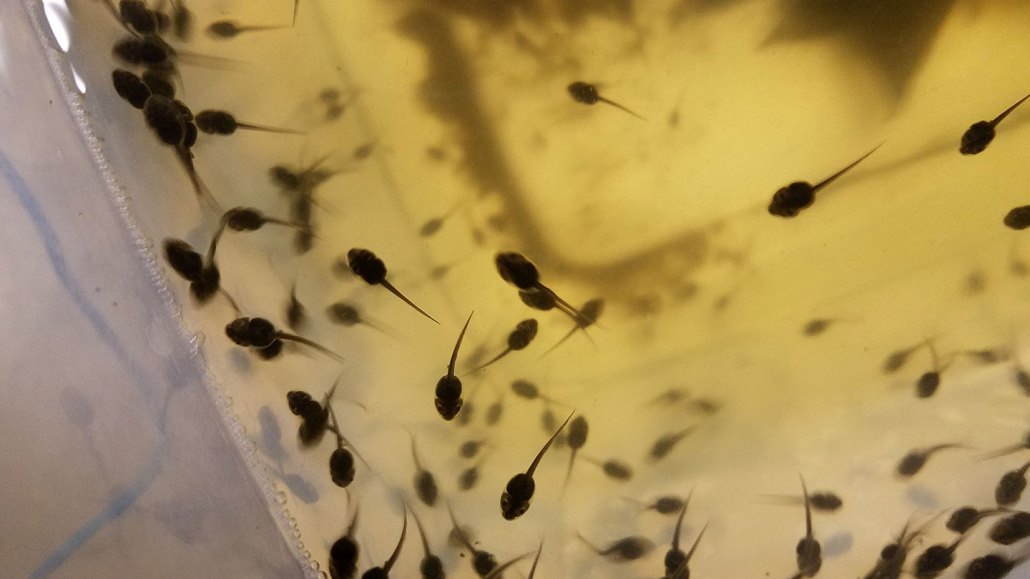
These wood frog larvae look delicate. And they are. But if they got a dose of bacteria from a green frog as eggs, they might end up a little tougher when heat rises.
Jason W. Dallas

These wood frog larvae look delicate. And they are. But if they got a dose of bacteria from a green frog as eggs, they might end up a little tougher when heat rises.
Jason W. Dallas